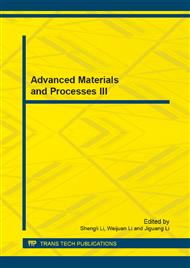p.672
p.678
p.686
p.691
p.699
p.703
p.708
p.712
p.718
Numerical Simulation of Preparation Process of Selective Absorbing Coating Based on Magnetron Sputtering Technology
Abstract:
According to a company's actual process of producing coatings, Finite Element Method is adopted to simulate and analyze the variation rules of various fields and mechanical parameters during the preparing process of solar spectrum selective absorbing coating for medium-high temperature application using magnetron sputtering. The results show that during the process of magnetron sputtering, magnetic fields uniformly distribute around the target and the sputtering etching area can be a wide range of 180°. In the spaces for magnetron sputtering, the magnetic flux is maximum at the contact between the and the core, and the magnetic flux density distributes uniformly between the magnetic steel and the target; the magnetic induction distribute uniformly within the120°direction of the target and forming two planar track typed etched channels; when the cylindrical target rotates at a proper speed, a large area of coating in uniform thickness can be deposited on the matrix. The results provide theoretical guidance for actual production of preparing medium-high temperature selective absorbing coating of uniform thickness and excellent quality.
Info:
Periodical:
Pages:
699-702
Citation:
Online since:
September 2013
Authors:
Price:
Сopyright:
© 2013 Trans Tech Publications Ltd. All Rights Reserved
Share:
Citation:


